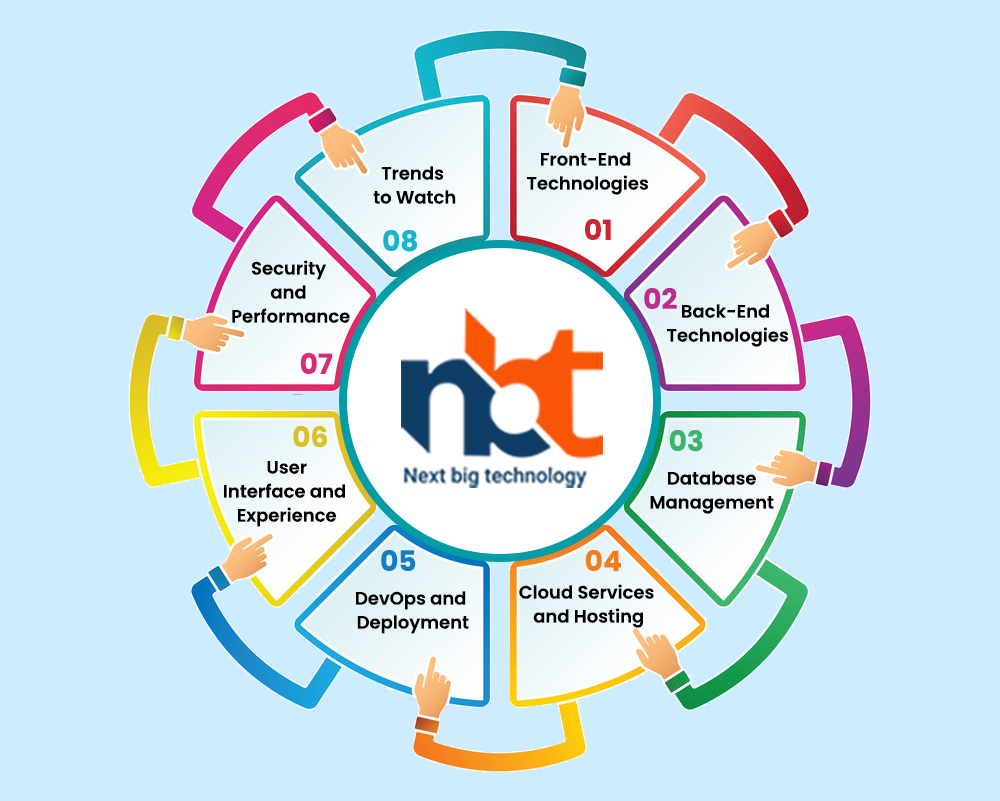In the rapidly evolving landscape of app development, choosing the right technology stack is pivotal for creating efficient, scalable, and user-friendly mobile applications. As we step into 2023-24, new trends and innovations are shaping the app development scene. This guide presents an overview of the best technology stack options to consider for your app development endeavors.
Table of Contents
1. Front-End Technologies
a. React Native
- React Native continues to dominate cross-platform app development.
- Offers a single codebase for both iOS and Android platforms.
- Leverages native components for optimal performance and user experience.
- Large community support and a wealth of third-party libraries.
b. Flutter
- Flutter gains traction with its expressive UI framework.
- Utilizes a single codebase to create natively compiled apps.
- Hot reload feature accelerates development and testing.
- Customizable widgets for flexible UI design.
2. Back-End Technologies
a. Laravel (PHP)
- Laravel, a PHP-based framework, excels in backend development.
- Known for its elegant syntax and feature-rich ecosystem.
- Simplifies routing, authentication, and database management.
b. Node.js
- Node.js maintains popularity for backend development.
- Asynchronous architecture suits real-time applications.
- Express.js for building robust APIs and handling requests.
3. Database Management
a. MongoDB
- MongoDB remains a frontrunner in NoSQL databases.
- Flexible document-oriented structure accommodates varied data types.
- Well-suited for projects with evolving requirements.
b. PostgreSQL
- PostgreSQL stands strong as a reliable relational database.
- ACID compliance ensures data integrity.
- JSONB data type for efficient storage of JSON documents.
4. Cloud Services and Hosting
a. AWS (Amazon Web Services)
- AWS offers an extensive suite of cloud services.
- Provides scalable solutions for storage, computation, and more.
- AWS Lambda for serverless computing and AWS Amplify for app development.
b. Google Cloud Platform
- Google Cloud Platform provides robust cloud services.
- Google Firebase for real-time databases, authentication, and hosting.
5. DevOps and Deployment
a. Docker and Kubernetes
- Docker facilitates containerization for consistent app deployment.
- Kubernetes for automating deployment, scaling, and management of containerized apps.
b. Continuous Integration/Continuous Deployment (CI/CD)
- CI/CD pipelines (e.g., Jenkins, CircleCI) automate app deployment workflows.
- Ensures efficient testing, integration, and deployment cycles.
6. User Interface and Experience
a. UI/UX Design Tools
- Design tools like Figma, Sketch, and Adobe XD streamline UI/UX creation.
- Collaboration features and prototyping for effective design iterations.
7. Security and Performance
a. Encryption and Authorization
- Implement end-to-end encryption for secure data transmission.
- Role-based access control (RBAC) for user authorization.
b. Performance Optimization
- Content Delivery Networks (CDNs) for fast content delivery.
- Caching mechanisms to reduce loading times.
8. Trends to Watch
a. Internet of Things (IoT) Integration
- IoT integration for app connectivity with smart devices.
- Expanding possibilities in various industries, from healthcare to smart homes.
b. Artificial Intelligence (AI) and Machine Learning (ML)
- AI/ML integration enhances app functionality and personalization.
- Chatbots, recommendation systems, and predictive analytics.
By selecting the right combination of technologies, you can create cutting-edge mobile applications that cater to user needs and stand out in the competitive app market of 2023-24. Each component of the technology stack plays a crucial role in app development, ensuring that your application is not only functional but also user-friendly, secure, and optimized for performance.
Remember to expand upon each key point, provide real-world examples, and offer insights into how these technologies work together to create powerful and engaging mobile applications. This will help you reach the desired 3000-word count while delivering valuable information to your readers.











